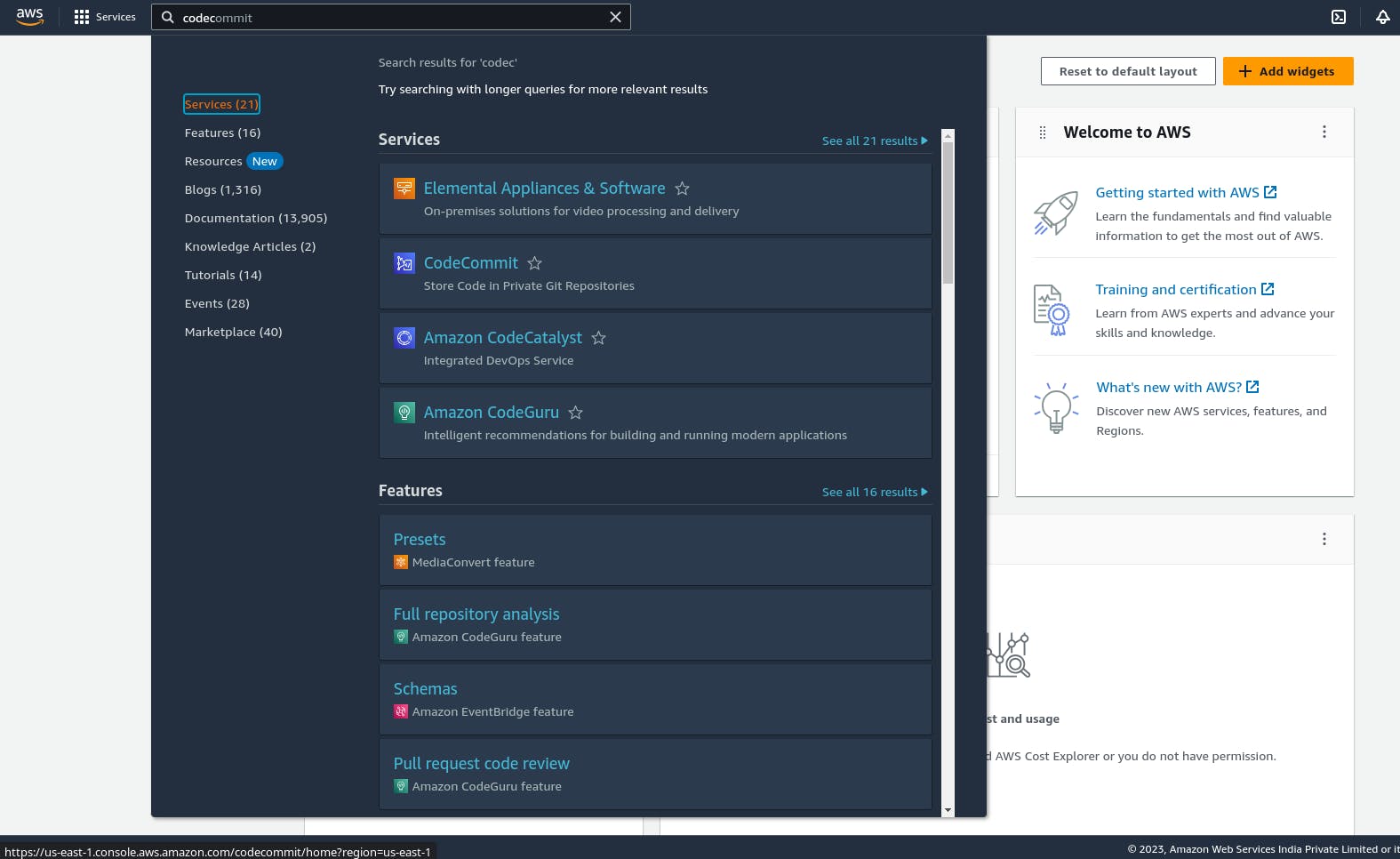Introduction
In the ever-evolving landscape of software development, version control systems play a pivotal role in enabling efficient collaboration, code management, and the overall software development lifecycle. Among the plethora of options available, Amazon Web Services (AWS) CodeCommit stands out as a powerful and versatile version control service. In this blog, we'll take a deep dive into AWS CodeCommit, exploring its features, benefits, use cases, and how it fits into the larger AWS ecosystem.
Understanding AWS CodeCommit
AWS CodeCommit is a managed source control service that enables teams to host secure and scalable Git repositories. It provides a fully managed, highly available, and secure platform for storing and managing code repositories. Built on the industry-standard Git version control system, AWS CodeCommit offers seamless integration with other AWS services and developer tools, making it an attractive choice for teams ranging from small startups to large enterprises.
Key Features and Benefits
1.Security:
AWS CodeCommit provides a secure environment for your code repositories. It encrypts data at rest and in transit, and you can integrate it with AWS Identity and Access Management (IAM) to manage access permissions at a granular level. This ensures that only authorized individuals can access and modify your code.
2.Scalability:
With AWS CodeCommit, you don't need to worry about infrastructure management. The service automatically scales to accommodate your needs, whether you're working on a small project or a massive application.
3.Integration:
CodeCommit seamlessly integrates with a variety of developer tools and services within the AWS ecosystem, such as AWS CodePipeline, AWS CodeBuild, AWS CodeDeploy, and AWS CodeStar. This integration simplifies the development process by enabling automated build, test, and deployment pipelines.
4.Collaboration:
CodeCommit supports collaboration among distributed teams. It provides features like pull requests, code reviews, and branch management, enabling efficient teamwork even when team members are located in different geographical locations.
5.Flexibility:
CodeCommit supports both public and private repositories. You can choose to host open-source projects or keep your code private within your organization.
6.Cost-Effective:
With a pay-as-you-go pricing model, AWS CodeCommit offers cost-effective solutions for version control, especially when compared to the maintenance and operational costs of running your own version control infrastructure.
Use Cases
1.Software Development:
CodeCommit is ideal for versioning and collaborating on software projects of all sizes. From individual developers to large teams, it provides a consistent and efficient environment for managing code changes.
2.Continuous Integration/Continuous Deployment (CI/CD):
By integrating CodeCommit with other AWS services like CodePipeline and CodeBuild, you can set up automated CI/CD pipelines. This streamlines the process of building, testing, and deploying your applications.
3.Collaborative Projects:
Whether it's a team of developers or a community of contributors, CodeCommit facilitates collaboration by enabling pull requests and code reviews. This is particularly useful for open-source projects.
4.Documentation:
CodeCommit can also be used for versioning and managing documentation, making it easier to track changes and collaborate on technical documents.
Getting Started
To start using AWS CodeCommit, follow these steps:
1.Sign Up:
If you're new to AWS, create an AWS account. If you're an existing user, log in to your AWS Management Console.

2.Create a Repository:
In the CodeCommit dashboard, create a new repository. You can choose between a public or private repository.


3.Clone Repository:
Clone the repository to your local development environment using Git commands.

4.Commit and Push:
Make changes to your code, commit them locally, and then push the changes to the remote CodeCommit repository.
5.Branching and Merging:
Create branches for new features or bug fixes, and merge changes back into the main branch when ready.
Conclusion
AWS CodeCommit offers a robust and scalable solution for version control, helping developers and teams manage their code effectively. With its security features, seamless integration with other AWS services, and flexibility in supporting various use cases, CodeCommit has become a go-to choice for organizations seeking a reliable version control system. By leveraging AWS CodeCommit, developers can streamline their workflows, collaborate efficiently, and focus more on creating innovative solutions. Whether you're a startup or an enterprise, AWS CodeCommit has the tools you need to succeed in your software development journey.
😊 Thank you so much for reading my blog! 😊 I hope you found it helpful and informative. If you did, please 👍 give it a like and 💌 subscribe to my newsletter for more of this type of content. 💌
I'm always looking for ways to improve my blog, so please feel free to leave me a comment or suggestion. 💬
Thanks again for your support! 😊

